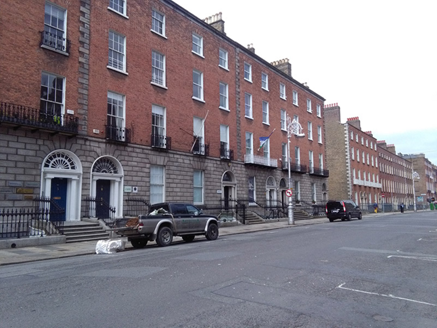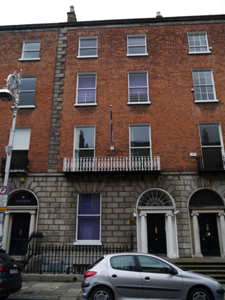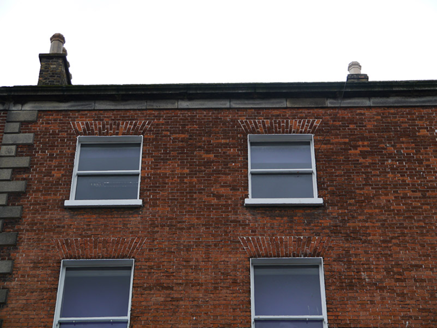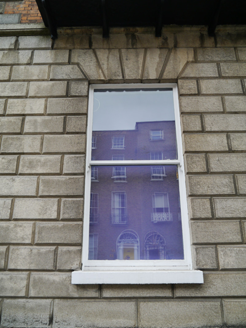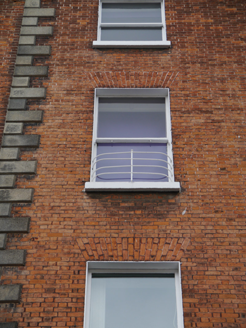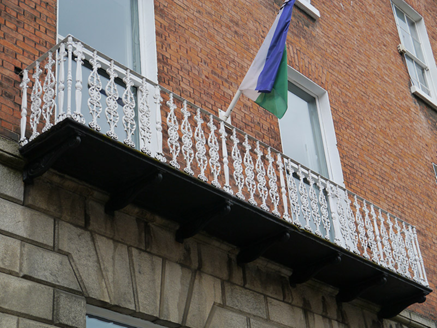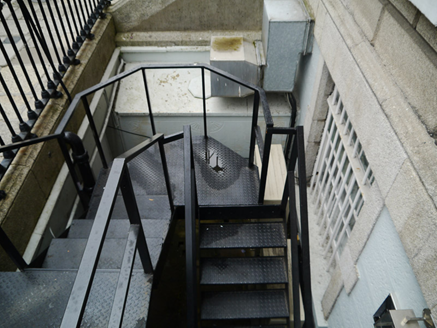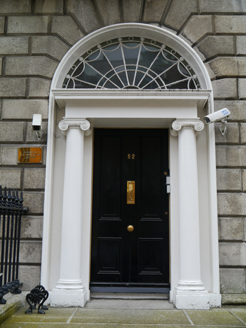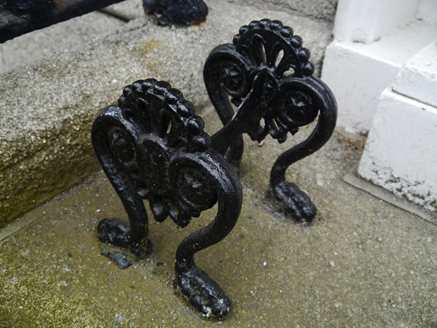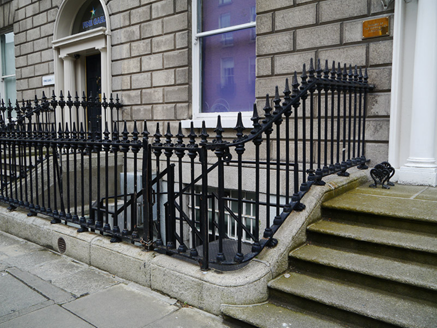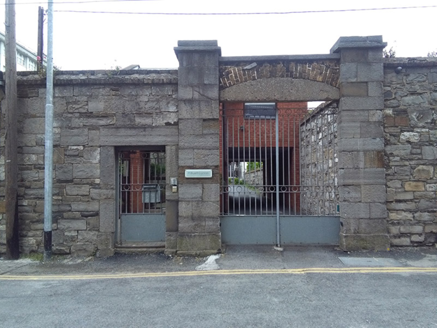Survey Data
Reg No
50100609
Rating
Regional
Categories of Special Interest
Architectural, Artistic
Original Use
House
In Use As
Embassy
Date
1800 - 1860
Coordinates
316857, 233336
Date Recorded
20/06/2016
Date Updated
--/--/--
Description
Attached two-bay four-storey former house over basement, built c. 1830 as one of terrace of three (Nos. 52-54), having two-storey return to rear shared with No. 53. Now in use as embassy. M-profile pitched slate roof, having brick parapet with granite coping and parapet gutters, cornice and platband. Brick chimneystacks with octagonal clay pots. Flemish bond red brick walling to upper floors with rusticated granite quoins to east end, rusticated granite walling to ground floor with projecting moulded granite sill course above and projecting granite course below, over painted tool-faced coursed limestone walling to basement; brick to rear. Square-headed window openings, diminishing in height to upper floors, with patent reveals and painted masonry sills, and with granite surrounds to basement and ground floors. Timber sliding sash windows with ogee and angled horns, ten-over-ten pane to basement and one-over-one pane elsewhere. Timber sash windows to rear, with round-headed stairs window to west bay. Ornate cast-iron balcony spanning first floor, wrought-iron window-guards to second floor and wrought-iron grille to basement. Round-headed doorcase with moulded surround, pro-style painted masonry columns with Ionic capitals, plain entablature, leaded batwing fanlight and four-panel timber door with beaded muntin and replacement brass furniture. Shared granite entrance platform with decorative cast-iron boot-scrape and five bull-nosed steps to street. Decorative spear-headed cast-iron railings on moulded granite plinth enclosing basement area. Cast-iron gate and mild steel steps lead down to basement. Plain square-headed doorway beneath entrance platform. Cast-iron coal-hole to pavement. carparking and recent mews building to rear of plot, with random rubble limestone wall to lane with dressed limestone surrounds to pedestrian gate and projecting dressed limestone piers to segmental-headed brick carriage-arch with concrete tympanum and recent steel gates.
Appraisal
A late Georgian house forming part of a terrace of three comprising Nos. 52-54, distinguished by terminating granite quoins. It has retained its overall character. It has the rusticated granite ground floor of houses on this stretch of the street, a fine Doric doorcase with an intricate fanlight, and ornate metalwork to its full-width balcony and railings. The intact setting enhances the building and contributes to the cohesiveness of the streetscape. Laid out in the 1780s and principally developed by a Mr Osburne and David Courtney, the street was built to link the newly constructed Grand Canal to the upper-class residential developments radiating from Leinster House. Built in pairs and rows over a period of thirty years, the fifty-four houses in the street were completed by 1834. Variations within the street, such as differences in parapet heights, are a telling feature of its piecemeal development, with the south side being notably grander than the north, boasting granite rustication across much of the ground floor. Mount Street Upper is terminated at its east end by St. Stephen's Church, transforming what is a typical and relatively modest late Georgian street into an urban set-piece and forming part of a key vista of Georgian Dublin.
